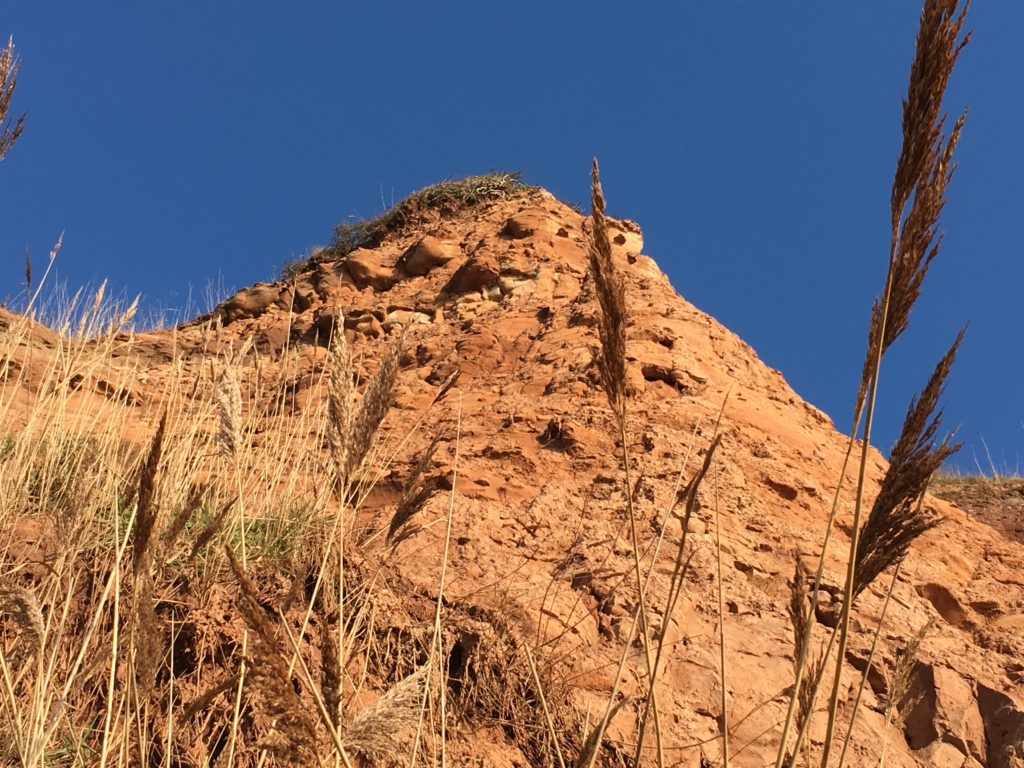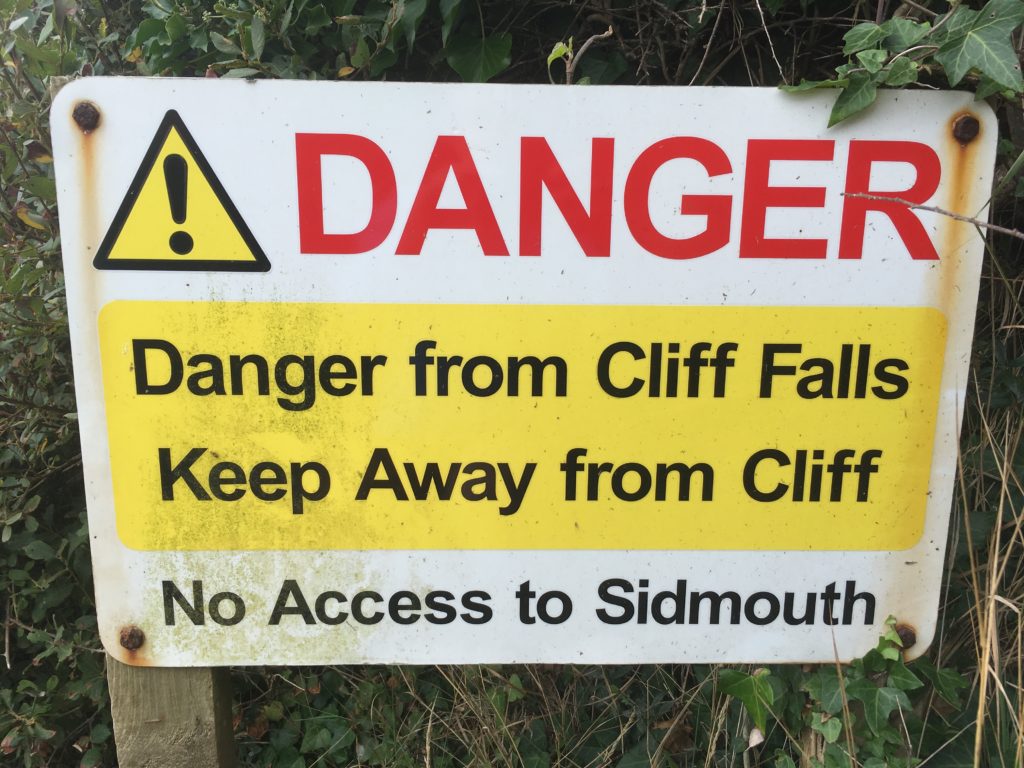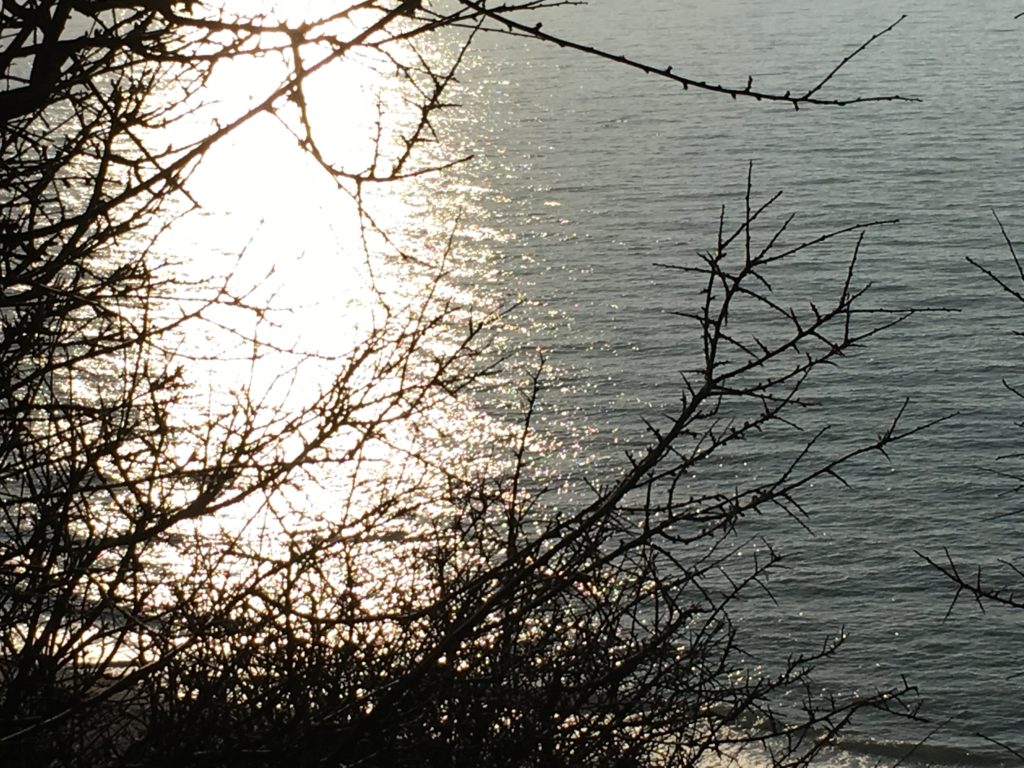Mark Brend contemplates a stretch of Devon’s Jurassic Coast

At Weston Mouth – just east of Sidmouth on what is now called the Jurassic Coast – stand a couple of huts coated in tar, windows shuttered, on a patch of lawn surrounded by an almost impenetrable hedge, right next to the beach. Judging by their condition and the mowed lawn, the huts are in use, though I’ve never seen anyone there. In a wooded area five minutes inland between Salcombe Regis and Sidmouth reinforced concrete domes loom out of the morning mist. Further east, between Branscombe and Beer, a statue of the Buddha gazes from the window of a former coastguard lookout.
The 8 miles of coast from Sidmouth to Beer is like this: littered with evidence of apparently mysterious human activity. The vacant tarred huts and the Buddha watching the sea seem like questions, the imagined answers to which have an allure at odds with the no doubt prosaic truth. The concrete domes are Norman Lockyer’s observatory, which he founded in 1912 on retiring to Salcombe Regis. He now rests in the graveyard of the village church. How easy to think of the observatory as a set for a British b-movie using an alien invaders storyline as a Cold War metaphor. You can’t get to Weston and Salcombe Regis beaches by road, and there are no facilities. You can sit on the pebbles on a mid-week morning and not see a soul for hours, then walk 20 minutes back to your car, and drive off down the A3052 to Exeter or Lyme Regis. It’s the sort of area where odd things might happen.
Then there are the stretches of undercliff, formed by landslips, creating terraces between the clifftop and beach, and sometimes gullies between the cliff and a seaward outpost that didn’t succumb to gravity. Some were formed centuries ago, and have become established features of the landscape. Others are still creating themselves.

Walk this area regularly for a few years,
and you realise that the coastline is protean. Nothing is ever quite what it
was. On a walk about five years ago I saw a wire fence along the top of
Salcombe Regis cliff. A landslip between two fence posts, which stood intact, left
the wire itself stretched in mid-air across the newly-formed void. I went back
last year to photograph it, but it had gone.
Branscombe is
unusually elongated, the nearest thing it has to a centre a mile or more
inland. During the war a company relocated here from London, continuing to
develop hair products as a front for munitions production. There was a radar
station nearby at the same time, and now there’s a campsite on a small airfield
at the top of the village. Some years ago I camped there with my son, tent
pitched close to a Russian Yak 18.
Standing on the beach at
Branscombe, in front of the café, facing inland, you see red sandstone cliffs
to your left, white chalk to your right. Next to you there’s a huge anchor, once
of the MSC Napoli, a cargo ship that beached here in 2007. Freight containers
washed ashore, including one containing BMW motorbikes. Locals descended on the
beach at night – looters, salvagers, beachcombers or environmental activists –
depending on your (and their) point of view. One, Hector Bird, told the
Guardian:
“A whole lot of
us came down from the village at 2am. Me and my mates got two [BMWs] off, but
we lost one of them to another gang. It was quite nasty at times and for some
it came down to who was the biggest bloke.”
At the eastern end of
Branscombe beach is Hooken Undercliff. A densely
vegetated area between the chalk cliffs and an outcrop like a cathedral spire that
didn’t fall when the 10-acre tract behind it broke free in 1790, it could have been
imagined by Conan Doyle. Accessible from a path down from the cliff or the
beach itself, as you walk through there’s a sense of being immersed in an inbetween
place, another world, a hidden kingdom between sea and land. I’ve always liked
novels with a sense of location. As soon I had the first inkling of a story I
knew I’d set much of the action of my novel, Undercliff, somewhere like this. It seemed like a metaphor for the
grey area between the natural and the more-than (or less-than) natural that I
wanted to explore.
Beyond Hooken the last stretch of clifftop path takes you past the Buddha, through fields of cows and rabbits, and down to the flint cottages of Beer. Here the white cliffs embrace the beach huts, deck chairs and fishing boats. The arm of Portland Bill, 40-odd miles away, beckons.

*
Undercliff by Mark Brend is published at the end of this month by Hornet Books. You can order a copy here. The Undercliff Suite EP – incidental music for Mark’s novel – will be released on Hanky Panky Records in the summer. You can watch the video for ‘Undercliff, 1973’ from the record here.